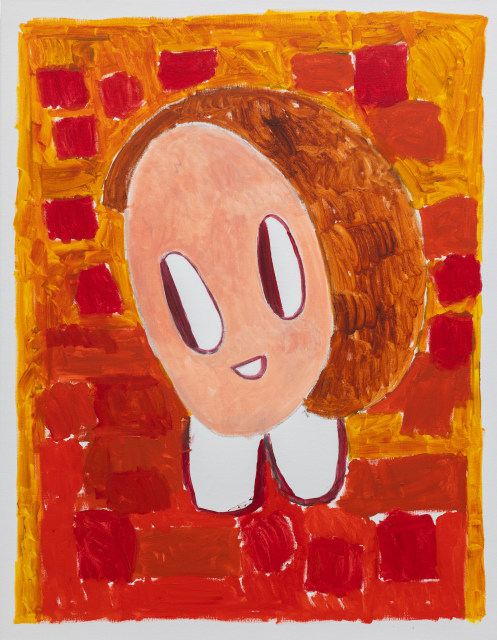André Butzer (b. 1973, Stuttgart) is a self-proclaimed colorist, whose works often include references to science fiction, hybridity, and art history. By developing a unique and elaborate fictitious universe in which he explores the definitive nature of abstract- figurative painting, Butzer’s richly hued and playful compositions avoid intellectualization. Theoretical discourses could distort the works. Rather, they are meant to be enjoyed in their strongly colored and almost humorous composition.
Anthony Olubunmi Akinbola (b.1991, Missouri) draws on the loaded connotations of culturally significant objects, such as the Durag, cassava plant, sponges, combs, and other Traditionally made from silk and used for the protection of Afro hair, the commodification of the Durag, especially in the rise of hip hop culture and blatant appropriation, has made it much more accessible to the masses. Now made from synthetic materials and in bulk, Akinbola uses the scraps of polyester, usually found in the bins of thrift stores, as his medium, almost like paint. The scraps are then painstakingly cut, sewn, and overlaid to create a brightly colored patchwork quilt – a way to change the perspective and implications many give the Durag.
Sarah Almehairi (b. 1998, Abu Dhabi) explores themes of identity, language, materiality and memory through her multidisciplinary approach to her work. Working with myriad materials, such as paper, concrete, painting, and found materials, Almehairi’s delicately and meticulously engages with geometric forms to construct a physical translation of her intimate ephemeral interaction with her surroundings. In that, the artist’s investigation unfolds a dialogue between themes of materiality, systems & interrelations, memory, and language through an intuitive and poetic examination of narrative and abstraction.
Each of the artists have created a semitic language within their chosen materials and themes. As Sarah Almehairi and Anthony Olubunmi Akinbola delve into ideas of identity and materiality, André Butzer’s comical and child-like approach to his works entices an important conversation about art history and the meeting point between abstraction and figuration.



